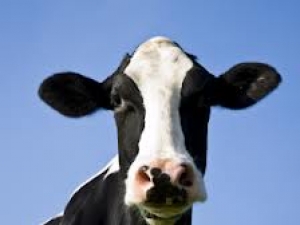Breeds of Dairy cows
Genetic Parameters for Perinatal Mortality in Irish Dairy Cattle

Introduction
Perinatal mortality in cattle is defined as calf mortality shortly before, during or shortly after parturition (Philipsson et al., 1976). Recent studies have highlighted that the prevalence of bovine perinatal mortality is on the increase, with current incidences varying between 2% and 10% internationally. The incidence in Ireland has been previously estimated as 4.29% in Ireland (Mee et al., 2008). Previous heritability estimates for perinatal mortality in Holstein dairy cattle are 4% for the direct genetic effect and 3% for the maternal genetic effect (Steinbock et al., 2003). The heritability of direct and maternal calving difficulty was reported to be slightly higher at 6% and 5%, respectively (Steinbock et al., 2003). The objective of this study was to estimate the heritability of perinatal morality, calving dystocia and also perinatal mortality not associated with calving dystocia in Irish dairy cattle.
Materials and Methods
Date of birth, herd of birth, gender of calf, degree of calving assistance, occurrence of perinatal mortality (recorded as calf dead at birth or within 24hrs), parity and age of dam, as well as breed of dam, calf and sire were available from the Irish Cattle Breeding Federation for the years 2002 to 2011, inclusive. In total data from 3,884,082 birth events were available, of which 2,094,359 had information on the degree of calving assistance at birth. Data for dams of unknown parity and of parities >10 were discarded (n=28,865), as well as births with more than two calves (n=4,854). Dams who calved for the first time less than 608 days of age (n=4,580) as well as dams calving greater than 2 years from the median age within each parity, were discarded (n=95,399). Dam parity was recorded as six classes; 1, 2, 3, 4, 5 and >5. Parity number of the dam in this study was the parity of the cow the day after she had calved. Only data from dairy herds were retained comprising 1,671,296 birth events. Contemporary groups were generated based on grouping animals together for each phenotype (dystocia, perinatal mortality, perinatal mortality without dystocia) within herds that had birth dates in close proximity. Only contemporary groups with at least 5 records were retained. A random selection of contemporary groups comprising 85,776 calves was retained for analysis. These animals originated from 3,523 different herds and from 7,285 and 7,539 unique sires and maternal grand sires, respectively. Factors associated with dystocia and perinatal mortality were determined using univariate repeatability animal-dam models in ASReml (Gilmour et al., 2008). Fixed effects included contemporary group, twins, parity, age within parity, and calf gender. Random effects included were the additive genetic effect, the maternal genetic effect and the permanent environmental effect. Breed was accounted for through the use of founder breed groups in the pedigree.
Results and Discussion
The percentage of data from parities 1, 2, 3, 4, 5, >5 was 26%, 21%, 17%, 13%, 9% and 14%, respectively. The percentage of birth events scored as no assistance/unobserved, slight assistance, severe assistance and veterinary assistance was 72.4%, 22.0%, 3.7% and 1.9%, respectively. The prevalence of perinatal mortality in this dataset was 2.63%, with 42.38% of perinatal mortality occurring in primiparae. The prevalence of twins was 3.59%, of which 58.51% were of the same sex; some level of assistance was reported in 35.2% of twin births. The incidence of dystocia (i.e., calving difficulty score ?2) was greater in male (31.82%) than female calves (23.20%). The occurrence of perinatal mortality when no dystocia occurred was 0.96%. The prevalence of perinatal mortality when not associated with dystocia was highest (9.42%) when both the sire and dam main breed component was Jersey. The direct heritability for perinatal mortality, dystocia, and perinatal mortality without dystocia was 0.01 (s.e. 0.003), 0.20 (s.e. 0.014) and 0.003 (s.e. 0.002), respectively. Maternal heritability estimates were 0.009 (s.e 0.003), 0.006 (s.e. 0.003 and 0.004 (s.e 0.002). These heritability estimates for dystocia and perinatal mortality are consistent with previous genetic parameter estimates reported in Irish Holstein-Friesians (Hickey et al, 2007; Berry et al., 2011).
Conclusions
The prevalence of perinatal mortality is still quite high in Ireland but the incidence is, nonetheless, low in the absence of dystocia. However, genetic variation clearly exists for traits which influence perinatal mortality suggesting that, if exploited, the incidence could be reduced.
Acknowledgements
The authors gratefully acknowledge funding from Science Foundation Ireland
References
Berry, D.P., Kearney, J.F., & Roche, J.R. (2011) Theriogenology 75:1039-1044
Gilmour, A.R., Cullis, B.R., Welham, S.J., & Thompson, R (2008) ASReml reference manual 3rd edition,
NSW Agriculture Biometrical Bulletin 3.
Hickey JM, Keane MG, Kenney DA & Cromie AR. (2007) J Dairy Sci, 90, 3900-3908
Mee, J.F., Berry, D.P., & Cromie, A.R. (2008) Animal 2:613-620
Philipsson, J., (1976) Acta. Agric. Scandivian 26:211
Steinbock, L., Nasholm, A., Berglund, B., Johansson, K., & Philipsson, J (2003) J. Dairy Sci. 86:2228-2235























